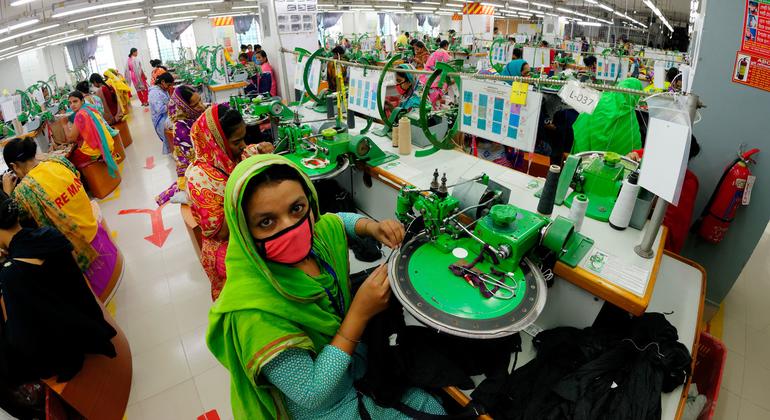The jobs gap for women is a “stubborn and damaging reality of the global labour market” but it is particularly worrying in developing countries, the International Labour Organization (ILO) said, with almost one in four women unable to find a job, compared with 16.6 per cent of men.
‘Bleaker picture’
That assessment is based on new data gathered from all people looking for work, as opposed to those registered as unemployed.
“It paints a much bleaker picture of the situation of women in the world of work…(it) shows that women still have a much harder time finding a job than men,” ILO said.
According to the UN agency, 15 per cent of working-age women globally would like to work but do not have a job, compared with 10.5 per cent of men, whereas unemployment levels are very similar for both sexes, “because the criteria used to define unemployment tend to disproportionately exclude women”.
Held back
Personal and family responsibilities, including unpaid care work are among the reasons why women are disproportionately affected in the search for work.
“These activities can prevent them not only from being employed but also from actively searching for employment or being available to work at short notice,” ILO said, adding that these requirements are a pre-requisite for unemployment registration.
Highlighting how the jobs gender gap has remained almost unchanged between 2005 and 2022, ILO pointed out that women continue to be overrepresented in many vulnerable sectors, such as running their households or working for relatives, rather than for themselves.
“This vulnerability, together with lower employment rates, takes a toll on women’s earnings,” the UN agency said. “Globally, for each dollar of labour income men earn, women earned only 51 cents.”
Male pay bias
Significant differences exist between regions, with low and lower-middle income countries seeing far worse gender disparity in income, with women earning 33 cents and 29 cents on the dollar, respectively.
In high-income and upper-middle income countries, women’s relative labour income reaches 58 and 56 cents respectively per dollar earned by men.
“Gender imbalances in access to employment and working conditions are greater than previously thought, particularly in the developing world…the pace of progress is disappointingly slow,” said ILO.
According to the UN labour agency, the global unemployment rate stood at 5.8 per cent in 2022, below the average rates in the two decades before the pandemic, and it is projected to remain at that level in 2023.

